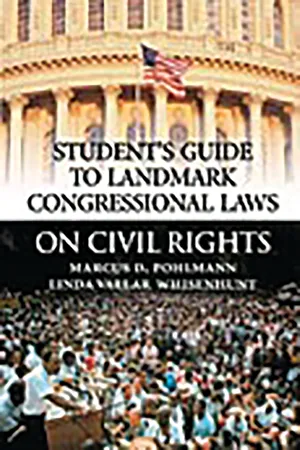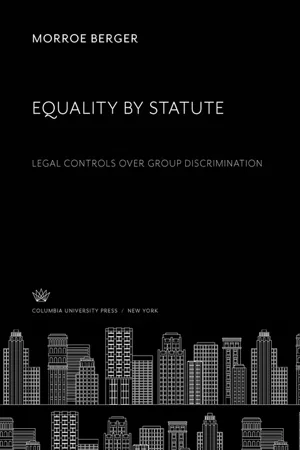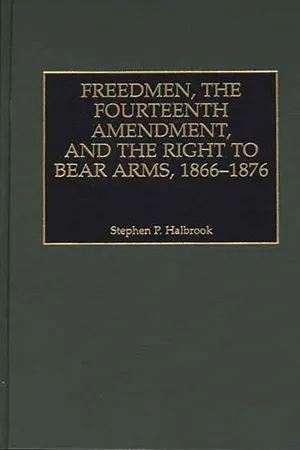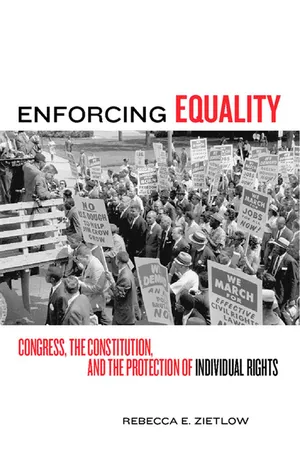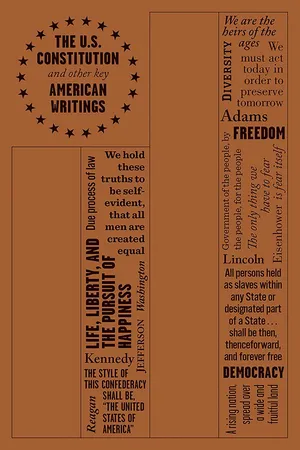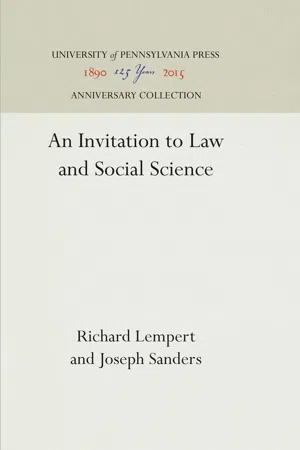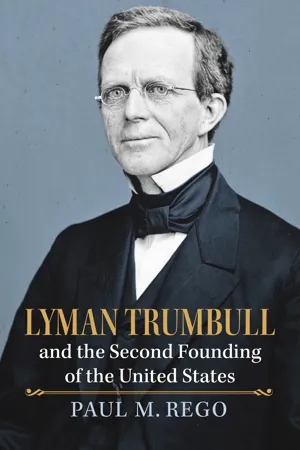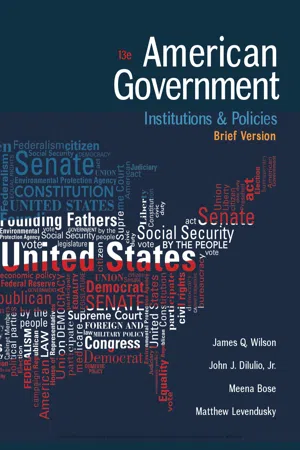History
Civil Rights Acts of 1866
The Civil Rights Act of 1866 was the first federal law to define citizenship and affirm that all citizens were equally protected by the law. It granted citizenship and the same rights to all people born in the United States, regardless of race or previous condition of servitude. The act aimed to counter the discriminatory Black Codes and lay the groundwork for future civil rights legislation.
Written by Perlego with AI-assistance
Related key terms
1 of 5
10 Key excerpts on "Civil Rights Acts of 1866"
- Marcus D. Pohlmann, Linda Vallar Whisenhunt(Authors)
- 2002(Publication Date)
- Greenwood(Publisher)
The major concern came to be providing legal protection for newly freed slaves resid- ing in less than friendly Southern states. Black codes, which made blacks second-class citizens under state law, restricted their rights and tied them to near slave-like working conditions. The Civil Rights Act of 1866, passed over President Andrew John- son's veto, was designed to protect the freedmen by guaranteeing among other things that former slaves were to enjoy the "full and equal benefit of all laws . . . as enjoyed by white citizens." Congress found its authority to pass such a law in its power to enforce the Thirteenth Amendment, which ended slavery. Opponents chal- lenged its constitutionality, however, claiming that Congress lacked the authority to limit state governments in such a manner. In point of fact, the United States Supreme Court had explicitly read the United States Constitution's first ten amendments, the Bill of Rights, to apply only to the federal government. Consequently, such liberties were protected against federal intrusion, but state govern- FOURTEENTH AMENDMENT 93 ments remained free to respect only those rights they so chose to respect. 1 In order to head off a protracted constitutional battle over Con- gress's authority in this realm, the Republican-dominated first Re- construction Congress finally passed the Fourteenth Amendment in June of 1866 and then submitted it to the states. If ratified, the amendment would nullify the infamous Dred Scott decision by granting full citizenship to all those born or naturalized in the United States. 2 Far more sweepingly, it would require states to pro- vide due process and equal protection under their laws, as well as respect all federal privileges and immunities. The amendment es- sentially redefined U.S. federalism in a very significant way.- eBook - PDF
Equality by Statute
Legal Controls Over Group Discrimination
- Morroe Berger(Author)
- 2019(Publication Date)
- Columbia University Press(Publisher)
The accelera-tion under the New Deal gave the federal government more direct power in economic affairs, which was reflected clearly in the welfare and status of minority groups, especially Ne-groes. In this chapter we shall discuss the two periods of in-terest in civil rights and group relations, as well as the effects of the New Deal and the changing role of government upon these aspects of American life. CIVIL RIGHTS DURING THE RECONSTRUCTION As we shall see in greater detail in Chapter Two, Congress at the end of the Civil War enacted five laws and successfully proposed three constitutional amendments to strengthen the freedom of the recently liberated Negroes. The Thirteenth Amendment (1865) abolished slavery. The Civil Rights Act of 1866, intended to combat the Black Codes, guaranteed Negroes full and equal benefit of all laws and proceedings for the security of person and property. T o remove all doubt as to the constitutionality of this law, Congress soon submitted to the states the Fourteenth Amendment (finally ratified in 1868), which forbids the states to make or enforce laws limit-ing certain rights of United States citizens and of other per-sons. In 1867 Congress outlawed peonage. Three years later the Fifteenth Amendment took effect, protecting the Negro's right to vote. In 1870, too, Congress reenacted the Civil Rights Act of 1866. The following year Congress passed a law pro-tecting all persons in the exercise of their rights under the Federal Constitution. In 1875 Congress enacted a comprehen-sive law to guarantee all persons equal accommodations in pub-lic places and means of transportation. By these acts and amendments Congress sought to raise the Civil Rights Today and During Reconstruction 9 Negro to full status as an American citizen. - Stephen P. Halbrook(Author)
- 1998(Publication Date)
- Praeger(Publisher)
THE CIVIL RIGHTS ACT OF 1871 Aside from the Fourteenth Amendment, the Civil Rights Act of 1871 was the most important and lasting accomplishment of the Reconstruction Congress in support of civil rights and the liberation of the freedmen. Its purpose was to remedy infringement of rights under color of state law and to suppress Ku Klux Klan violence. The entitlement of freedmen to all the rights of citizenship, including the right to keep and bear arms, was clear enough. The difficult question was how these rights might be protected by statute and in the courts. Early in the third session of the Forty-First Congress, Representative John Bingham reported for the majority of the House Judiciary Commit- tee that the Fourteenth Amendment did not protect women's suffrage. 12 Civil Rights Act of 1871 121 The Committee made clear, however, that the Fourteenth Amendment incorporated the Bill of Rights: The fourteenth amendment... did not add to the privileges or immunities before mentioned [in Article 4, § 2], but was deemed necessary for their enforcement as an express limitation upon the powers of the States. It had been judicially deter- mined that the first eight articles of amendment of the Constitution were not limi- tations on the power of the States. To remedy this defect of the Constitution, the express limitations upon the States contained in the first section of the fourteenth amendment. . . were incor- porated in the Constitution. 13 Representatives William Loughridge (Iowa) and Benjamin F. Butler (Massachusetts), a former Union army general, issued a minority report arguing that the Fourteenth Amendment protected women's suffrage. The report quoted from Justice Bushrod Washington's opinion in Corfield v. Coryell (1823) that the privileges and immunities protected by the Consti- tution are "those which are in their nature fundamental, and belong to the citizens of all free governments.- eBook - ePub
Enforcing Equality
Congress, the Constitution, and the Protection of Individual Rights
- Rebecca E Zietlow(Author)
- 2006(Publication Date)
- NYU Press(Publisher)
The 1964 Civil Rights Act not only established a federal commitment to racial justice and created an effective enforcement mechanism to carry out that goal, but it also marked a reconfiguration of federalism norms. Like the key provisions of the Reconstruction Era and New Deal legislation, the 1964 act greatly enhanced federal power to protect rights of belonging. In negotiating the bill, members of Congress carefully worked out a compromise balancing state and federal power to protect rights of belonging. For example, the key breakthrough in the Senate debate was the adoption of Dirksen’s amendment that gave first priority to the rights enforcement of state administrative agencies, reducing the extent of the federal bureaucracy necessary to enforce the act, and ensuring a state role in the protection of civil rights. Thus, the 1964 Civil Rights Act became a constitutional milestone, reinforcing the enduring role of Congress as a protector of rights of belonging and altering the structure of federalism by empowering the federal government to protect those rights, while maintaining a sphere of state autonomy to do the same.By enacting the 1964 Civil Rights Act, Congress resolved two areas of constitutional uncertainty, whether race discrimination could be legal anywhere in the country, and whether Congress had the power to address private discrimination. The act resolved that uncertainty by establishing a nationally uniform policy against racial discrimination and a congressional commitment to enforcing equality rights against private discrimination.155 While members of Congress did not directly challenge the Court’s decision in the Civil Rights Cases , it is arguable that the act constituted a de facto overruling of the state action requirement established by that case.156 By relying on the commerce power, however, Congress avoided confronting the Court or testing the Court’s precedent-limiting Section Five. Nonetheless, the bill marked a commitment to congressional enforcement of equality norms and to federal protection of minority rights against public and private infringement.157 Ultimately, the success of the 1964 Civil Rights Act signaled that “the struggle against discrimination by private actors had become a legitimate end of the federal government.”158 - Founding Fathers(Author)
- 2015(Publication Date)
- Canterbury Classics(Publisher)
THE CIVIL RIGHTS ACT (1964) __________ In June 1963, President John F. Kennedy proposed that the United States adopt a sweeping civil rights law that would prohibit segregation in all public places and of all public facilities, would prohibit restrictions to voting rights, and would prohibit employment discrimination based on race, color, sex, religion, or national origin. After Kennedy’s assassination in 1963, President Lyndon B. Johnson continued to fight for the legislation. He faced much opposition in Congress, including a Senate filibuster, but the Civil Rights Act finally became law on July 2, 1964. A n act To enforce the constitutional right to vote, to confer jurisdiction upon the district courts of the United States to provide injunctive relief against discrimination in public accommodations, to authorize the Attorney General to institute suits to protect constitutional rights in public facilities and public education, to extend the Commission on Civil Rights, to prevent discrimination in federally assisted programs, to establish a Commission on Equal Employment Opportunity, and for other purposes. Be it enacted by the Senate and House of Representatives of the United States of America in Congress assembled, That this Act may be cited as the “Civil Rights Act of 1964”. T ITLE I V OTING R IGHTS S EC. 101. Section 2004 of the Revised Statutes (42 U.S.C. 1971), as amended by section 131 of the Civil Rights Act of 1957 (71 Stat. 637), and as further amended by section 601 of the Civil Rights Act of 1960 (74 Stat- eBook - PDF
- Edward Sidlow, Beth Henschen, Edward Sidlow(Authors)
- 2021(Publication Date)
- Cengage Learning EMEA(Publisher)
The National Reaction. As the modern civil rights move- ment gained momentum, media images increasingly showed nonviolent protesters being assaulted by police, sprayed with fire hoses, and attacked by dogs. These pic- tures shocked and angered Americans across the country. The resulting public backlash led to nationwide demands for reform. The March on Washington for Jobs and Free- dom, led by Martin Luther King, Jr., in 1963, aimed in part to demonstrate widespread public support for leg- islation to ban discrimination in all aspects of public life. Civil Rights Legislation As the civil rights movement demonstrated its strength, Congress began to pass civil rights laws. While the Fourteenth Amend- ment prevented the government from discriminating against individuals or groups, the private sector— businesses, restaurants, and the like—could still freely refuse to employ and serve nonwhites. Therefore, Congress sought to address this issue. The Civil Rights Act of 1964. The Civil Rights Act of 1964 was the first and most comprehensive civil rights law. It forbade discrimination on the basis of race, color, religion, gender, and national origin. The major provisions of the act were as follows: ▸ It outlawed discrimination in public places of accommodation, such as hotels, restaurants, movie theaters, and public transportation. ▸ It provided that federal funds could be withheld from any federal or state government project or facility that practiced any form of discrimination. ▸ It banned discrimination in employment. ▸ It outlawed arbitrary discrimination in voter registration. ▸ It authorized the federal government to sue to desegregate public schools and facilities. Voting and Housing Rights. Other significant laws were passed by Congress during the 1960s as well. The Vot- ing Rights Act of 1965 made it illegal to interfere with to move to the rear of the bus. She was arrested and fined for violating local segregation laws. - eBook - PDF
- Richard Lempert, Joseph Sanders(Authors)
- 2016(Publication Date)
The 1957 Voting Rights Act Before 1957 the federal government had no legislative authority to sue to enforce a black's right to vote in the South. Legislation is the art of the possible, and from the late nineteenth century until the 1950s it was impossible to pass any new laws on voting over southern opposition. 1 In 1957 the first Voting Rights Act in nearly 90 years was passed. This act authorized suits to be initiated by the Attorney General to redress discrimination against named Negro plaintiffs who sought to vote and created the Commission on Civil Rights to study the extent of discrimination in the South. Of the two, the creation of the commission was the more important. Through its investigations and publications, it publicized the degree of discrimination in the South. The provision for litigation was a total failure. After 2 years only three suits had been filed, and no black person had achieved the franchise through use of the statute. Part of the problem was that voting registrars in the South were able to avoid giving the government the records needed to prove discrimination by destroying them or by the simple expedient of resigning from office. The courts held that when registrars resigned they were no longer the official custodians of county voting records and had no authority to respond to government subpoenas. Furthermore, the government's suit could change matters only for the named plaintiffs, and it required courage for any black to stand up and claim voting discrimination, 2 a necessary precon-dition for federal action. 1. There had been a group of post-Civil War statutes designed to ensure that the franchise would be extended to all in the South, but most of these laws were repealed in 1894, and the few that survived were rarely used to attack discrimination (see Christopher, 1965, p.l). 2. In 1962 the state of Mississippi changed registration laws so that all applicants' names would be published for two weeks. - eBook - PDF
- Bruce J. Schulman(Author)
- 2010(Publication Date)
- CQ Press(Publisher)
Further Reading Davis, Abraham L., and Barbara L. Graham. The Supreme Court, Race, and Civil Rights: From Marshall to Rehnquist . Belmont, CA: Sage, 1996. Savage, David G. The Supreme Court and Individ-ual Rights . Washington, DC: CQ Press, 2009. A – Z Civil Rights and the Supreme Court ★ 77 ★ Civil Rights Cases (1883) Supreme Court cases that struck down the Civil Rights Act of 1875. That act made it a crime to deny equal access and enjoyment of public accom-modations to black persons. The rulings in these cases made it much more difficult to enforce the fundamental civil rights guaranteed to blacks by the Thirteenth and Fourteenth Amendments. In the Civil Rights Cases (1883), the Court very narrowly interpreted the Fourteenth Amend-ment’s protection for black citizens. This narrow-ing process consisted of two elements: a limited category of federally protected rights, and an in-sistence that the Fourteenth Amendment applied only to state, not private, action. In the Civil Rights Cases, the Court struck down the Civil Rights Act of 1875 as beyond the power granted to Congress by the Fourteenth Amendment. There were five such cases grouped under the title of the Civil Rights Cases and decided together by the Court. In United States v. Stanley and United States v. Nichols , the defendants were charged with refus-ing to allow blacks equal access to inns and ho-tels. In United States v. Ryan and United States v. Singleton , the defendants had refused to allow black people to sit in a certain part of theaters in San Francisco and New York. Robinson v. Memphis and Charleston Railroad Co. resulted from a rail-road conductor’s refusal to allow a black woman to ride in the “ladies’” car on the train. The Court voted 8-1 to strike down the Civil Rights Act. - Paul Rego(Author)
- 2022(Publication Date)
- University Press of Kansas(Publisher)
Indeed, a great deal of early and substantive deliberation over the meaning and nature of US citizenship occurred long before the adoption of the Fourteenth Amendment, during the debates over the Civil Rights Act of 1866, and that was because Trumbull was determined to incorporate language that explicitly acknowledged the citizenship of “all persons born in the United States . . . without distinction of color.” Throughout those discussions, and to his everlasting credit, he was steadfast both in his refusal to remove the words “without distinction of color” and in his insistence that those words applied to all individuals, regardless of race, color, ethnicity, or national origin. The debate over the nature of both civil rights and citizenship gave Trumbull an opportunity to delineate the nebulous concept of privileges and immunities, and to shed light on the power of Congress to enforce both the Thirteenth Amendment and the original privileges and immunities clause. It is important to stress that both constitutional provisions were mentioned in his explanation of the 1866 Civil Rights Act. Even though the original privileges and immunities clause was adopted much earlier, and by a different set of framers, Trumbull believed that it was directed toward the same goal. And his defense of the founders’ supposed aims did not end there. As Reconstruction got under way, Trumbull worked to ensure that it remained consistent with states’ rights, limited government, and private property rights.- eBook - PDF
American Government
Institutions and Policies, Brief Version
- James Wilson, John Dilulio, Meena Bose, Matthew Levendusky(Authors)
- 2017(Publication Date)
- Cengage Learning EMEA(Publisher)
Indeed, while once calling a bill a civil rights measure would have been the kiss of death, today that is no longer the case. For example, in 1984 the Supreme Court decided the federal ban on discrimination in educa -tion applied only to the “program or activity” receiving fed -eral aid and not to the entire school or university. 28 In 1988, Congress passed a bill to overturn this decision by mak -ing it clear that antidiscrimination rules applied to the entire FIGURE 5-1 Incr ease in Support among Souther n Democrats in Congress for Civil Rights Bills, 1957–1991 House Senate Source: Congressional Quarterly, Congress and the Nation , vols. 1, 2, 3, 7, 8. 1970 2010 Federal Office 10 43 State Office 169 642 Local Office 1,290 9,800 Source: “A Time to Reflect: Charting the Quality of Life for Black Americans: Politics,” USA Today , February 21, 2011. TABLE 5-1 Incr ease in Number of Black Elected Officials IMAGE 5-5 This picture of a police dog lunging at a black man dur-ing a racial demonstration in Birmingham, Alabama, in May 1963 was one of the most influential photographs ever published. It was widely reprinted throughout the world and was frequently referred to in congressional debates on the civil rights bill of 1964. AP Images/Bill Hudson Copyright 2018 Cengage Learning. All Rights Reserved. May not be copied, scanned, or duplicated, in whole or in part. WCN 02-300 5-2 Women and Equal Rights 87 5-2 Women and Equal Rights The political and legal efforts to secure civil rights for African Americans were accompanied by efforts to expand the rights of women. There was an important difference between the two movements, however: whereas African Americans were arguing against a legal tradition that aimed explicitly to keep them in a subservient status, women had to argue against a tradition that claimed to protect them.
Index pages curate the most relevant extracts from our library of academic textbooks. They’ve been created using an in-house natural language model (NLM), each adding context and meaning to key research topics.
